On August 19th, 1944, the 27th’s highest scoring ace of World War II, Lieutenant Thomas E. Maloney lost both engines of his P-38 during a beachhead cover mission, thereby setting the stage for one of the grittiest personal episodes of the war.
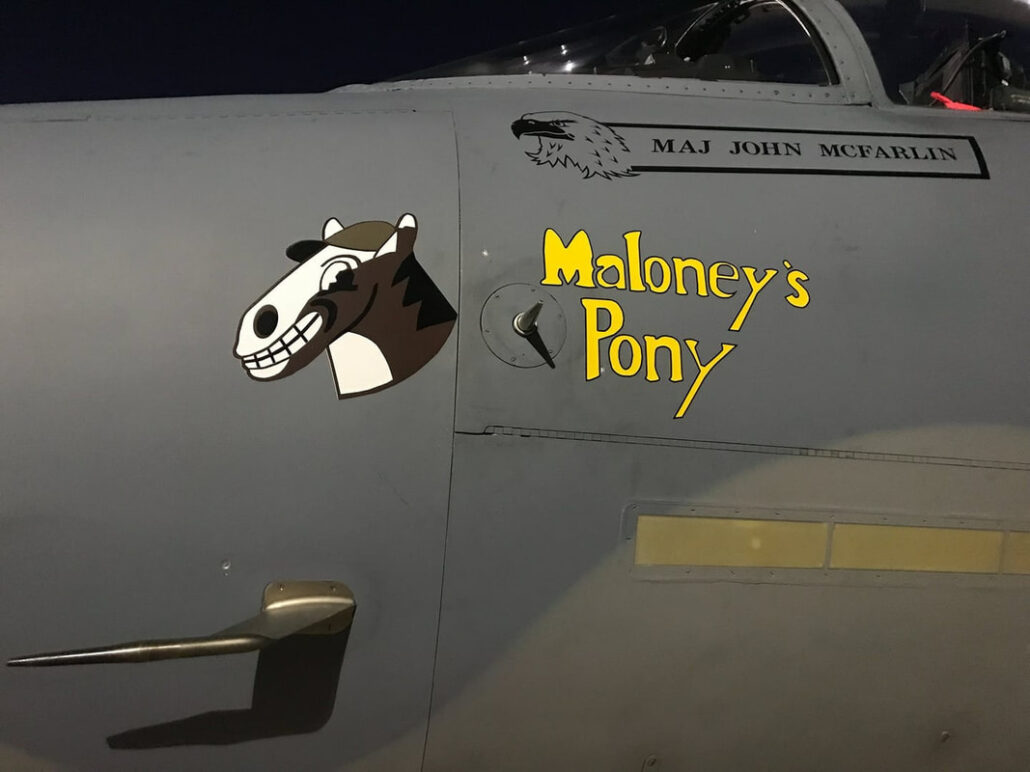
While strafing, Maloney’s right engine began knocking. A check of the oil pressure and temp showed that he had lost the engine. He feathered the prop and called his flight lead, Major Pope to inform him. He climbed to 1,500 feet and came off the coast and headed home to Aghione. Major Pope and two other members of the 27th flight broke off their strafing passes to escort him. They were about 60 miles from Corsica.
Barely five or six miles off the coast of France, Maloney’s other engine developed an oil leak and would soon fail. Though ditching the P-38 in the sea was not recommended and a very risky procedure, he had no choice in the matter. He lost most of his altitude trying to get the engine started and it was then too late to bail out.
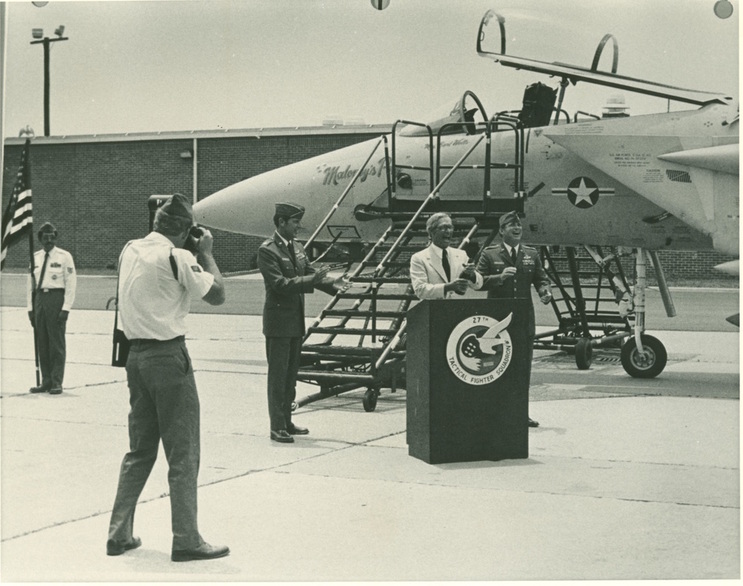
He made it successfully, however, and when the spray settled Maloney was seen to climb out and get into his dinghy and wave to the flight overhead. Pope had been on the radio already and called the air-sea rescue station for help. For another few minutes, until darkness fell, they stayed over the hapless Petdog (Assigned call sign).
During the night Maloney drifted into shore. It was still dark and he was cold and wet. He was not sure whether this beach was enemy occupied or not, and for a while he stayed near the water’s edge. But with the dawn he thought he might be seen and captured and that was the last thing Maloney wanted.
Knowing the dangers of mines he stepped carefully through the sand and brush looking about carefully for evidence that they had been planted, and for signs in German, French, or English.
Despite his care the inevitable happened. The beach was mined and had been for some time. The surface of the sand had reassumed its normal appearance. Maloney triggered one off. In the split second before it went off he sensed it and flung himself onto the ground. But not before both feet were shattered, both legs had compound fractures just above the ankles, his legs were torn open by scores of metal fragments, his left bicep was cut open and his face was powder-burned.
Maloney lay dazed and bleeding and he drifted off to sleep. The next morning he awoke and tried to drink from his canteen, but found it to be dry. For the rest of the day he alternately passed out and woke up. On the third and fourth day – Aug 21 and 22 – Maloney began to realize he was going to die of thirst before his wounds. It took him a tremendous amount of time to drag himself the 50 feet it took to get to a row of bushes where he found water. This entire time he would pass out and wake up. At one point he felt movement in his wounds. A check of his wounds revealed that his wounds were filled with maggots. He killed as many of them as he could.
On the fifth and sixth day he moved toward a wooden observation tower. As he got closer he entered a swampy area with water that made moving a lot easier. He finally made it to a small wooden foot bridge that he began to dismantle and build into a raft. He did this on Aug 27th and 28th. He used the small raft and some poles to propel him through the swamp. He was hoping it would lead back to the ocean but it never did. He stopped in an area known as the Camargue, one of the most mosquito infested areas in the world. He simply covered his face with his hands and let them have at him
The next morning, August 29th, he got back in his raft and went back to a cabin he saw earlier. When he approached he saw six Frenchmen that were cleaning up the mess the Germans had made. He called to them and they came to his rescue.
They placed him in the bed of their old truck and started to drive up a trail. The pain was unbearable and Frenchman ended up hand carrying Maloney up the trail. One of the men drove the truck ahead to arrange for an ambulance. They finally made to a road where an ambulance was waiting.
On the way to the hospital, the ambulance stopped at a house where a French lady fed him some soup, his first meal in ten days. He thought it was the best soup he had ever eaten. Next, the ambulance took him to a French hospital in Marseille.
There was antiseptic but no anesthetics. The doctors began the painful task of extracting the fragments—fortunately they had some penicillin. They soon thought he would lose both legs. Marseille had mostly been bypassed by the army. But in a couple of days the medics came for Maloney, and he was flown to the 100th General Hospital in Naples. From here the word was flashed to Colonel Richard at Foggia that Maloney was back. In a day or two red tailed P-38s began to land at Capodichino and small groups of pilots commenced to find their way to Maloney’s ward. It now looked like he would keep one leg. Then it developed that he might lose only one foot. In the end, he did not lose either.
Colonel Richard (1st FG/Commander) issued an order that every day that weather permitted, a 27th pilot would land at Capodichino and visit Lieutenant Maloney. He was the group’s highest scoring pilot in World War II so far, he had been immensely popular. He had 15 victories, air and ground, over the enemy. And then his promotion to Captain came in.
After a month more they flew him home to the states. The date was known at the 1st Fighter Group headquarters, and after the C-54 lifted away from Capodichino and leveled off at altitude, a dozen red-tails from the 27th Fighter Squadron settled down on both sides, silently from nowhere, like silver ghosts, and they escorted him for a hundred miles out over the blue Mediterranean. Then one by one they silently peeled off and went back to the war.
In a special order Colonel Richard ordered that in the 27th Fighter Squadron, airplane “number 23 should for evermore be named “Maloney’s Pony”.
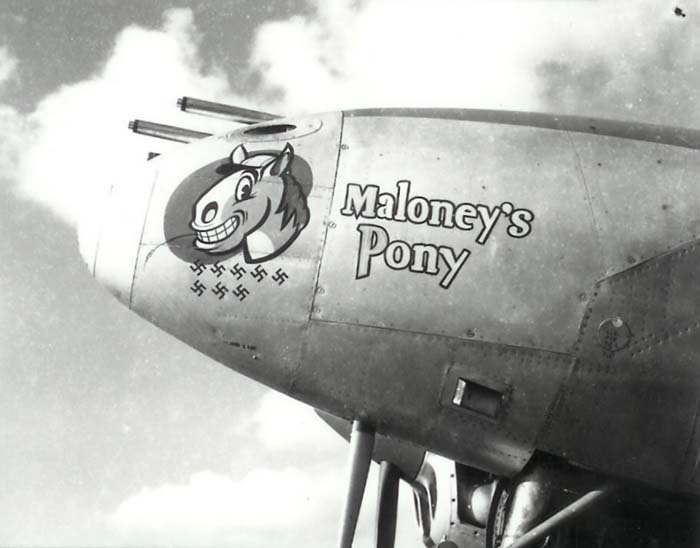
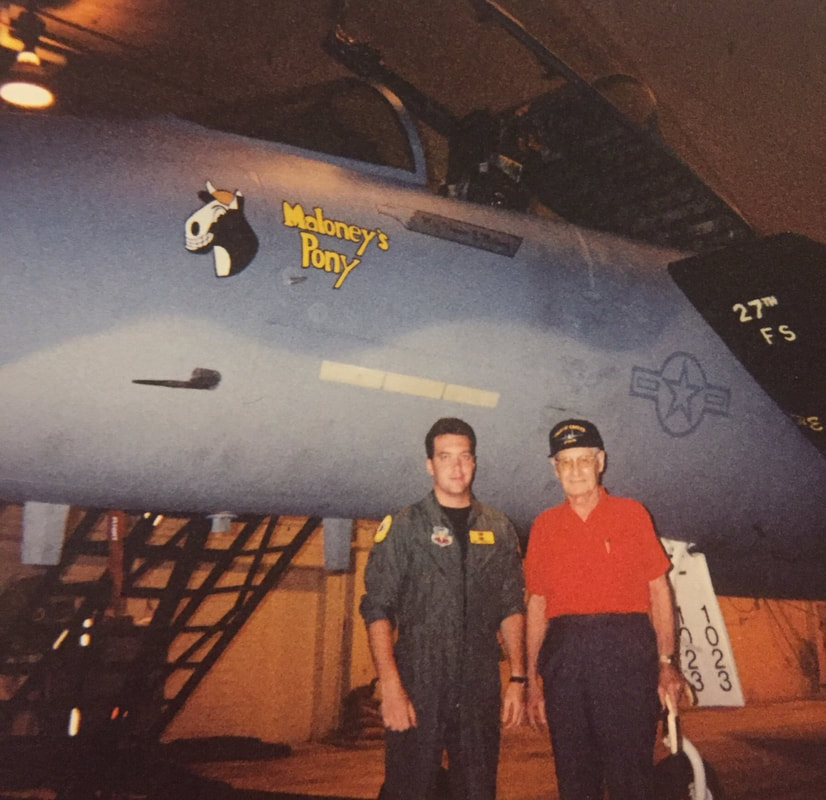
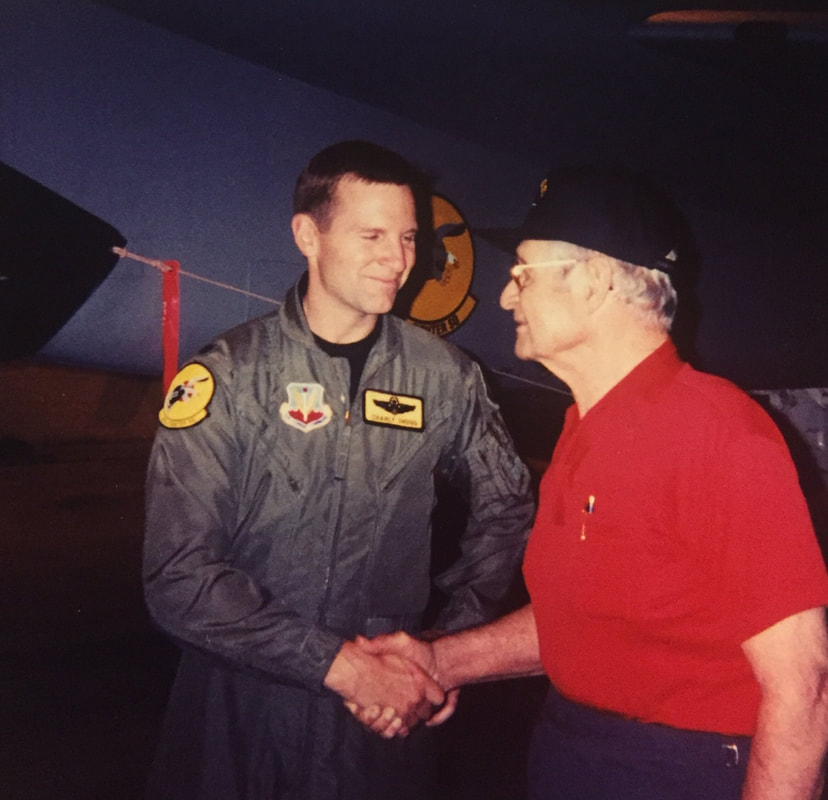
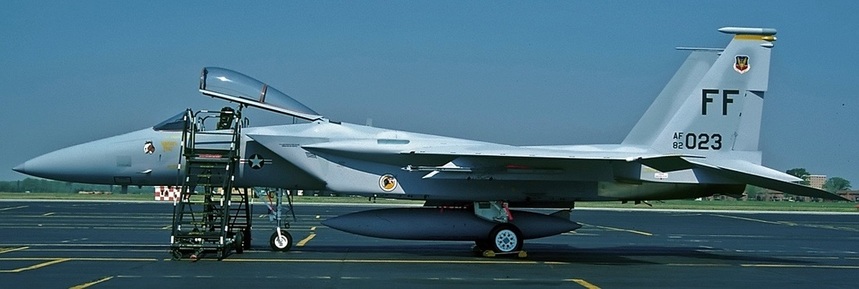
On 10 March 1980, Maloney’s Pony was being run after being the “Can jet” for several weeks. The jet had a fuel leak behind the left anti-collision light that was out of limit. There was lots of discussion on whether to run the aircraft or not, but at some point the pressure to make the jet ready for Monday’s schedule took over. When the maintainer started the #2 engine and energized the electrical system, a large explosion occurred on the left wing root, fire ensued and 5023 was destroyed by fire.
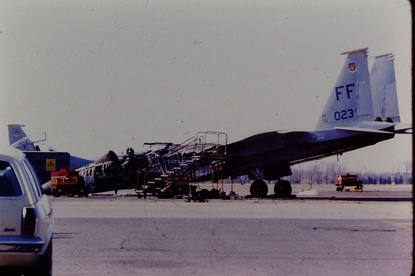
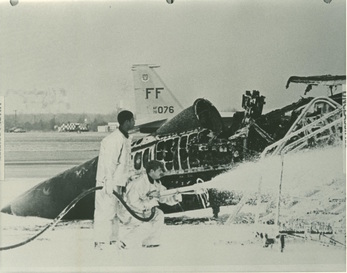
Maloney’s Pony crashes at Nellis AFB
2023 Was destroyed on 21 March 1996 while it was taking off from Nellis during a GREEN FLAG mission. The pilot, Capt. Mike “Arson” Fontaine, ejected before the aircraft impacted the terrain and survived with significant injuries.
Maloney’s Pony Nellis Crash – The Pilots Story
As a young wingman in the 27th, I didn’t even know we had a jet with nose art until the morning ofMarch 21st, 1996. I went out to my assigned jet the morning of a Green Flag exercise and saw tail number 2023, Maloney’s pony. I was number two in a formation takeoff. At the time, we were having all kinds of afterburner ignition problems so my flight lead had briefed we would select afterburners at 100 knots. We were flying with two external fuel tanks, it was relatively warm and we were taking off
with a 10 knot tailwind for noise abatement. I will spare you all the accident investigation details but basically a foreign object (FOD) lodged in my nozzle control screw causing an explosion in my right afterburner and forcing the nozzle to stick wide open right around liftoff time. I got airborne maybe 50 feet above the runway and then the jet started losing airspeed and descending. I was out of runway to land, forcing me to eject just at the point of impact. The jet was found with both throttles in full
afterburner and it took the investigation guys quite a while to figure out what happened. I was cleared of any wrong-doing, thankfully.
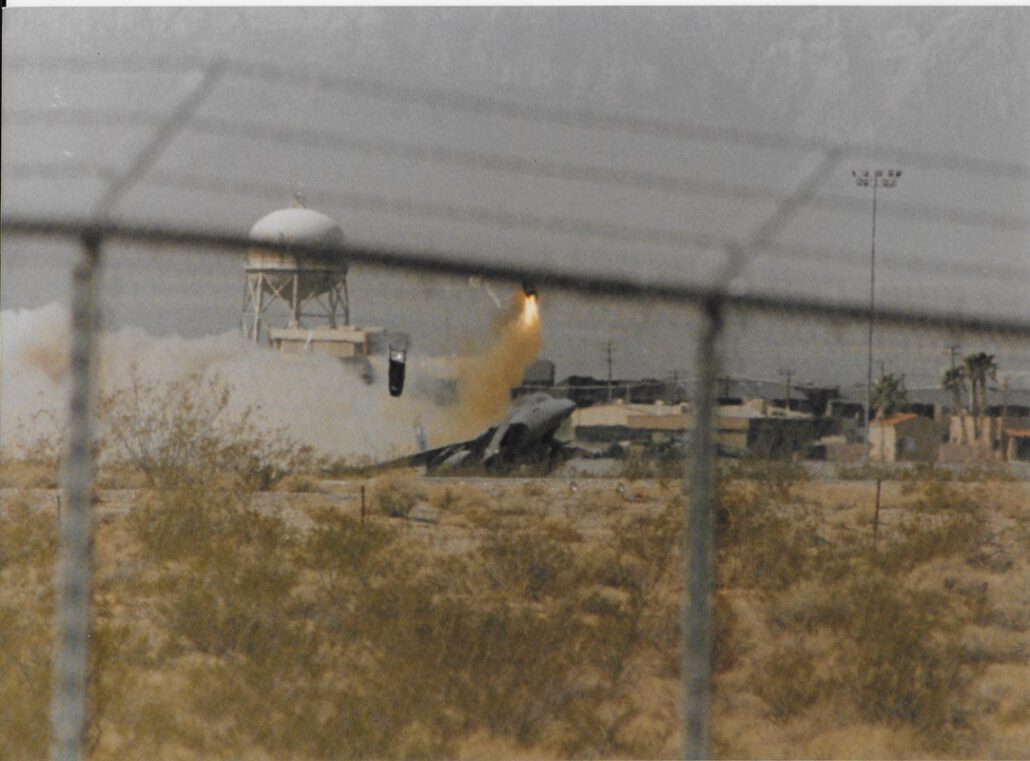
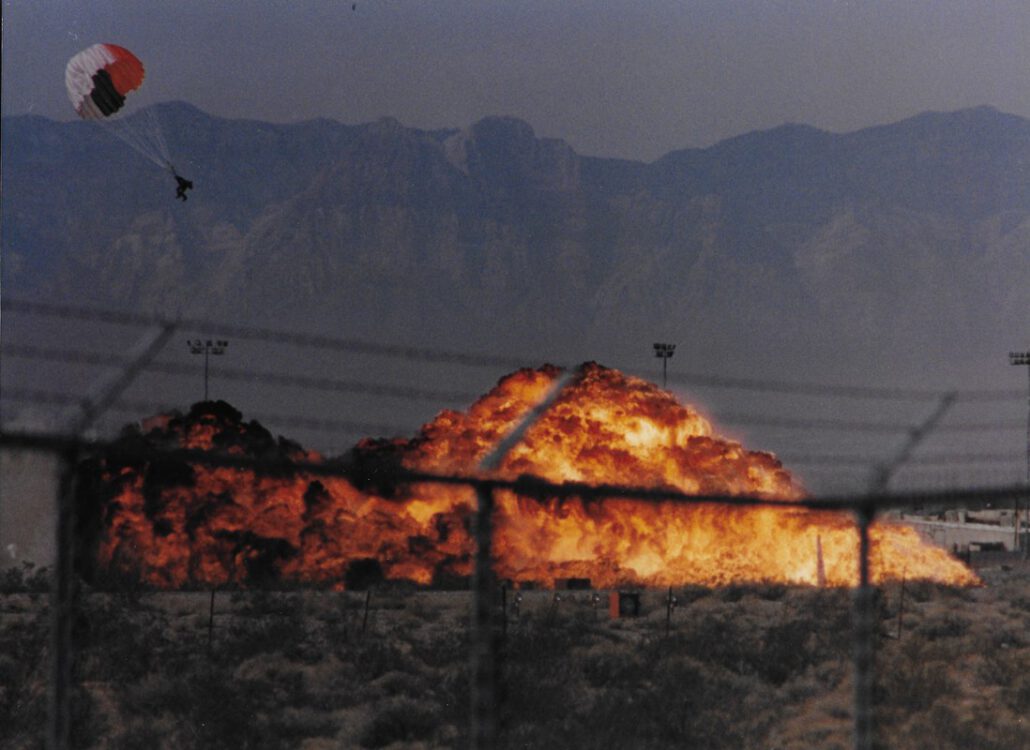
While the press reported “minor” injuries, after the fire melted my parachute panels (see photo), I fell from about 75 feet into the burning wreckage shattering my pelvis, sacrum, wrist, and elbow and suffering burns on my elbows, knees and back. The fire trucks were changing out at the time of the crash and were quickly on the scene saving my life. I spent several weeks in the hospital including about a week in the ICU with two immediate surgeries and then some more later. I returned to flying 6 months later. One ride with a squadron pilot in a two-seat model, so I could get my landing currency back, and I was back fully mission capable. Takeoffs, however, still to this day elevate my heart rate, even in the back of a Southwest 737, where I find myself quite often traveling
for business.
Back in the squadron after my accident, I got the honor to meet Tom Maloney and he gave me a copy of his book. He signed, it “To Arson, the only pilot who could bring down Maloney’s Pony”. Hopefully it is still in the squadron library. The nose art you saw in the squadron bar was indeed from the front panel of 2023, it survived the crash.
After I returned to flying, the squadron got F-15 tail number 1023 and designated it the new Maloney’s pony. The first time I flew it, they painted my name on the side of the jet. Thereafter, it was the pride of the fleet. I flew for 3 and half more years in the squadron including two deployments
supporting the no-fly zone over Iraq. Despite it almost killing me I still loved flying the F-15, it was all I ever wanted to do from when I was 13 years old.
Mike “Arson” Fontaine